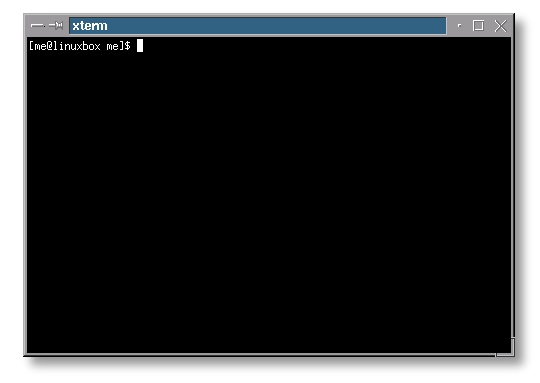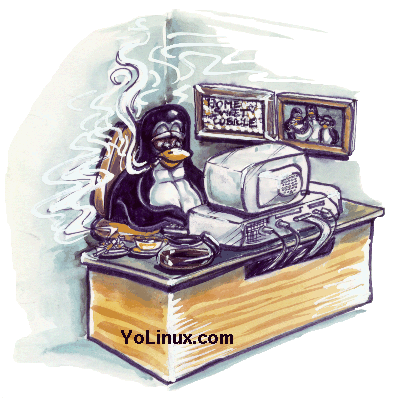Abstract
The command line is the original type of interactive input to every computer system. Even though the graphical user interface has taken over most peoples interaction with the computer, there is still many valuable uses for the command line, provided you are willing to spend the time needed to learn the commands.
Overview

Image complements of http://linuxcommand.org/index.php
Since this is a Linux workshop, I am going to start by focusing on the Commandline in Linux. Later we will discuss the commandline on the Micintosh, and then Windows.
Since I believe in not re-inventing the wheel, I am going to use information already available on the Internet. Here is a web site devoted to the Linux Command line: Learning the Shell
Administration

Image complements of http://www.yolinux.com/TUTORIALS/LinuxTutorialSysAdmin.html
Linux System Administration and Configuration
Here is a slightly older web site, but still has a lot of good information on Linux. Lets explore some of their recommendations. Linux System Administration and Configuration
Linux shell scripts
Quote Here is a collection of various shell scripts I wrote over the years to ease the administration of my systems and help with much webmaster work. They are all Linux shell scripts and need the Bash shell and GNU commands to run (standard on any Linux system). Some, or much, tweaking may be needed to make them work on other Unix systems. To avoid that install the Bash shell and GNU commands. Each script has an -h flag for usage explanation. All scripts are released under the GPL license. You can download all scripts in a compressed tar archive (which also includes an FAQ): dm-scripts-1.13.tar.bz2
In the Beginning was the Command Line
This is one of my favorite articles. It is a long artice but you will probably enjoy it. For the source have a look at In the Beginning…
Or a local copy is available here: In the Beginning…
The Elements Of Style: UNIX As Literature
Quote If there’s nothing different about UNIX people, how come so many were liberal-arts majors?
It’s the love of words that makes UNIX stand out.
Macintosh Command Line
We have discussed the Linux Command line now, how about a command line for the Macintosh?
Why Use the Command Line in Mac OS X?
For more information from this author see: Command Line Search
Introduction to the OS X Unix Command Line
This is an online tutorial for using the Unix command line on the Macintosh. It is also a good introduction to the Unix command line, Tutorial Online
Windows Command Line
The command line has almost disappeared on windows. But that is too bad since there are a number of uses. Here is a Web site with some useful information.
The Windows Command Line, Batch Files, and Scripting discusses many commands which can make you life easier, especially if you are Administering windows computers.
Run Line
One feature which can open you to a new view of windows in the Run Line. The web page: The Start-Run Line discusses some unusual ways to access features from the Run Line.
Launch Admin Tools from the Command Line
How would you like to have a set of command line arguments to start up the Admin Tools. Instead of wading through a series of menues why not start these tools directly from the command line. Have a look at: Launch Admin Tools from the Command Line
Network configuration using CLI
How about: Manually configuring IP addressing in Windows via Command Prompt
Or would you like to: Block ports from the command line

SMS Messages from Scripts
One interesting use for shell scripts or batch programs is the ability of the computer to allert you if there is a problem. Suppose you have a temperature monitor in your vacation house, and anytime the temperature in the house falls below 55 degrees you would like to be warned.
Lets assume you have a small computer in your vacation home that is connected to a cable modem. Lets also assume you have hooked up a one-wire temperature monitoring system. You could accomplish this using the Arduino to monitor the temperature as described in: Temperature Monitoring with Arduino
You can use the information in: Arduino and Linux TTY to listen to the Arduino controller.
So now you are watching the output of the Arduino for a warning of a low temperature. Next you can use the Linux command “mail” like this to send you a message mail -s "The temperature is below 55 Degrees" .net
So you create a shell script to monitor the temperature messages on a regular basis. If you get a temperature below 55 degrees you can trigger an email to be sent to your phone. By using the crontab scheduler you can check the log every 15 minutes.
This is an example of how you could use the command line, through a shell script, to perform a task where there was no GUI application.
For those of you using windows, you can do the same task but you will need to install the application: An Email Program for Sending SMTP Mail from a Command Line.
Written by John F. Moore
Last Revised: Tue 01 Sep 2020 08:10:06 PM EDT

This work is licensed under a Creative Commons Attribution-NonCommercial-ShareAlike 3.0 Unported License.
